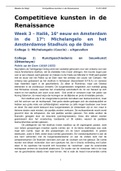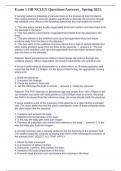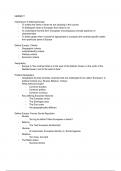Samenvatting
Summary - Politics of Difference 2024 (FY)
- Vak
- Instelling
This is an in-deph summary of the readings and the lectures for this year's Politics of Difference. Please keep note that the readings are not as good and so it is important to do the perusalls in order to understand the intricacies of some of the readings . This summary only provides a somewhat ex...
[Meer zien]












